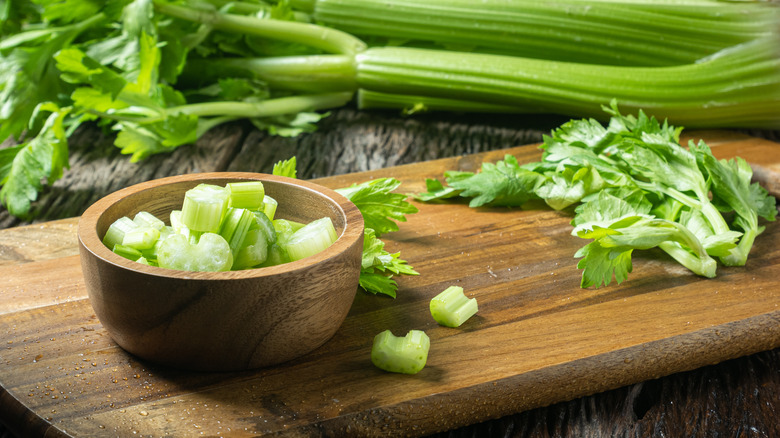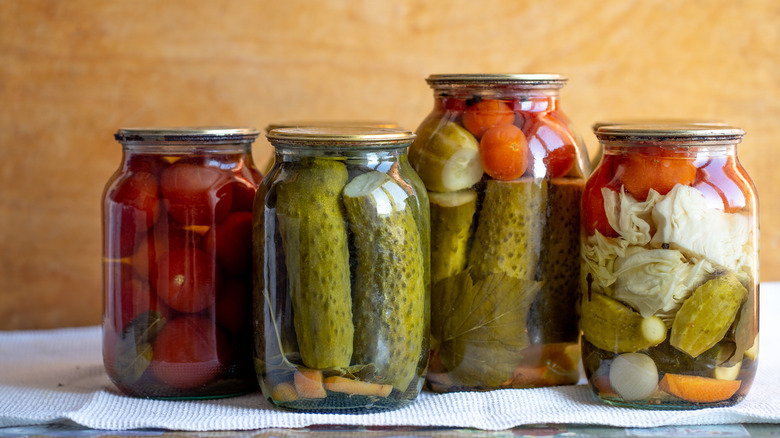The Unusual Canned Celery Recipe You've Probably Never Heard Of
Canning food is filled with rich history, and has become quite the popular hobby and method of food preservation in recent years. Since its conception in 1809 when Nicholas Appert introduced the first canning procedures (per The Spruce Eats), the technique has been updated countless times and passed down through generations.
Essentially any fruit or vegetable you could think of has a canning recipe, including celery. Because celery tends to lose its appealing, crunchy texture in the canning process, it often isn't a canning enthusiast's first vegetable of choice, according to Tips Bulletin. As a result, canned celery isn't typically eaten by itself, and is often used as an ingredient in soups or stews. There is even an improved celery canning recipe that calls for use of a pressure cooker.
Before home canning enthusiasts had the luxury of a pressure cooker, though, they were obligated to get creative with their canned celery recipes in order to avoid eating the limp celery stalks on their own.
The unique canned celery recipe from the early 1900s
In 1915, Alexander H. Kerr successfully patented a new tool with which to can foods more effectively: the additional two-piece metal lid you likely know to accompany glass jars today, according to the U.S. Department of Agriculture. The same year, according to The Spruce Eats, a new recipe in which to can celery was published in "The Ball Blue Book of Canning and Preserving Recipes." Yes, Ball, as in the popular mason jar brand you've likely seen in the canning section of your local craft or grocery store.
The celery is essentially canned to produce a relish, according to Southern Living, in a recipe the Ball book titled "Spiced Celery." The recipe called for 5 bunches of celery, 15 tomatoes, and 1 large red pepper, all finely chopped and combined. Vinegar, 2 cups of sugar, and a combination of salt, mustard, celery seed, cloves, allspice, and cinnamon are added to the vegetable mixture before boiling. Finally, of course, they are sealed in Ball jars, according to the Ball Blue Book of Canning recipe.

